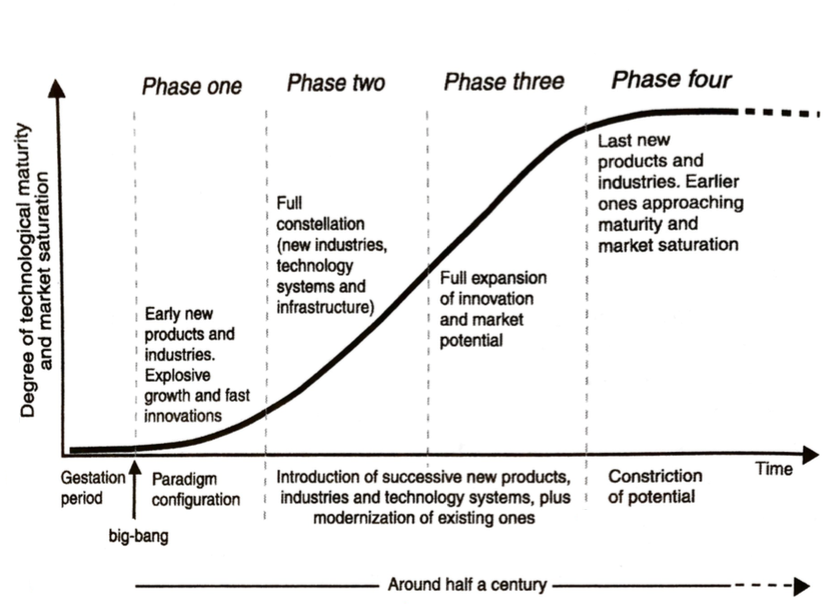The Entrepreneurial Society Is A Vision Of The Future.
It’s easy to despair about the state and direction of our society. It feels overwhelmed by division, consumed by nastiness in politics, under attack from cyber technology and manipulative algorithms, and threatened by nation-state violence, governmental restrictions, crony capitalism, and the all-powerful pharma-industrial complex. To name just a few of the current – and worsening – threats.
It’s also easy – if you try – to conjure up an entirely different vision, one that is optimistic and positive. I call mine the entrepreneurial society, and I am working with many collaborators to realize it.
Entrepreneurship is a function in society. And it’s also a role that many can play – there are no barriers to entry and no structural barriers to success. The function is to identify unmet needs – what people want and don’t currently have, what they wish for, circumstances with which they feel dissatisfied and would like to change. Entrepreneurs aim to meet these needs and bring the betterment that people want, in return for a profit. The profit is not just monetary; it includes psychic profit, such as pride in achievement, and a sense of meaning and purpose. There’s an ethic of service in entrepreneurship.
Think about a future in which entrepreneurship is the norm for society, where everyone devotes their commercial energies to serving others, whether as business owners and founders, or as collaborative teams, or as employees of entrepreneurial firms. An entrepreneurial society.
Here are some of the ways the entrepreneurial society will be an improvement.
The service ethic prevails: people’s energy channeled into making life better for each other.
Successful entrepreneurship requires, as a first principle, the exercise of empathy. Entrepreneurial business requires deep understanding of another’s wants, preferences, desires, biases, and motivations. To develop skill at empathy is to think about others’ points of view, their experiences, their mental models, how they see the world. There’s no judgment, simply a genuine effort at subjective understanding. “ How can I please this person? How can I make their life a little bit better?” is the operative motivation.
It’s the service ethic. When it prevails in society, we’ll be in a better place.
True Justice and Fairness.
Everyone possesses unique tacit knowledge. Everyone is endowed with imagination and creativity. Everyone is capable of thinking about new value for others. There are an infinite number of services that can be conceived of and generated in a service economy.
True justice is when all the people are free to use their knowledge and creativity to serve others and profit from doing so. As they proceed along this pathway, they’ll get better and better at the front end – the empathy and imagining the better future – and at the back end – the results, the exchanges they make, the profit they realize.
True fairness is when these entrepreneurs get to keep the fruits and profits of their endeavors, building up their private property, reinvesting in it in more productive capital, enhancing their ability to serve and to profit, experiencing business growth, and experiencing personal and private fulfillment. Life, liberty, and property are our natural rights, according to John Locke. Although the words were edited in the Declaration of Independence, to “life, liberty and the pursuit of happiness”, the principle remains. By owning, utilizing, strengthening, and growing our private property, we realize fulfillment in life. Entrepreneurship provides us the pathway.
Self-reliance, adaptability, and learning.
The entrepreneurial society will reverse one of the major tendencies in the current society, that of dependency. Entrepreneurship draws on self-reliance for drive and energy. Individuals and small teams are typically at the forefront of experimentation and innovation that results in new value for customers and economic growth for communities and the nation. They gather evidence, formulate hypotheses and explore alternatives via their own volition, not as a result of the direction of others. They make adjustments based on feedback loops, and they eagerly learn how to change and do better.
This kind of initiative is frowned upon in today’s society. It’s seen as risky, and people should not have to take risks. They should be protected against risk with bailouts and other forms of redistribution. They should be compensated for error via welfare. But without risk and error, there is no discovery, no advance, no improvement.
Dissipating power structures.
Entrepreneurship thrives on open competition. Entrepreneurs are rivals for customers, so they strive for continuous improvement in customer service and customer satisfaction. The consequence is rapid change and dynamism, and social structures that are adaptive and flexible in embracing change. Stodgy bureaucratically regimented hierarchies can not respond to these dynamics. Such bureaucracies are found especially in government, which will not be able to regulate entrepreneurs out of business, because they won’t be able to move fast enough. A similar fate will befall bureaucratic crony capitalist corporations, whose mania for defense of what they’ve got will be overwhelmed. The result will be a sweeping away of entrenched elite power structures, and greater economic freedom for all.
A non-political society.
The greatest benefit of the entrepreneurial society, and the biggest positive change versus what we experience today, will be depoliticization. Politics is divisive. Its goal is to get us to hate each other. Entrepreneurship is unifying. Its aim is mutual satisfaction, a happy seller and a happy buyer.
Let’s teach everyone the entrepreneurial method. Let everyone start companies, grow companies, invest in companies, all with no thought of prediction. A middle class of business will emerge, defined not by income but by venturing. This middle class will produce more jobs and more enduring, more stable companies, embedded in strong communities, with greater well-being and less churn. The fruits of creativity take root in endurance and durability, and contribute to stability and the taking on of bigger challenges. Decade after decade, the middle class of business will generate value and produce wealth, employing lots of people and educating successive generations to take the entrepreneurial method with them into a better future.

